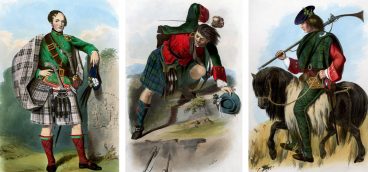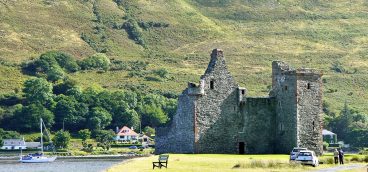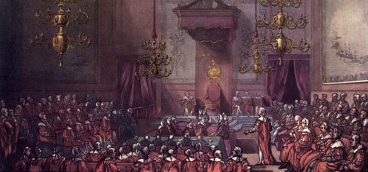A Remarkable Life

One morning, I received a call from my Zurich lawyer, Dr. Andreas Froriep, who informed me that someone was trying to find out who was behind Arran Isle Improvement Association AG. I burst out laughing.
It’s true, I suppose, that the Arran miscreants and their shyster lawyers could litigate in Switzerland for a decade or so and maybe—maybe—break Swiss secrecy. They would then know that AIIA AG was controlled by a shadowy outfit called AIIA Ltd, an Isle of Man company.
A few decades of litigation on the Isle of Man might—might—disclose that AIIA Ltd was in turn controlled by a Liechtenstein anstalt with the unhelpful name of Fondation Viscience. And so on and so on.
Suffice it to say that the miscreants soon sued for peace, writing big checks (well, big for them) to AIIA AG, which, being a generous sort of company, passed the proceeds on to Lady Jean. AIIA AG then set its sights on the next level of miscreants, who didn’t even bother to put up a fight.
To this day, the good people of Arran, not excluding Lady Jean, wonder who was really behind AIIA AG. But with Dr. Froriep having passed away recently, only one person on earth knows the answer to that question, and Your Humble Blogger isn’t talking.
In any event, as “suggested” by my boss, I had duly traveled to the correct Isle of Arran, had met up with Lady Jean, had treated her respectfully, had gotten to the bottom of the problem on Arran, and hadn’t dilly-dallied.
Unfortunately, despite the occasional progress we made, I hadn’t fixed the problem. True, we had forced the wolf to back off from Lady Jean’s front door, but the nasty animal was still patrolling Strabane, trying to find a way inside. In short, the depth of Lady Jean’s financial challenges seemed to be beyond fixable, at least by me.
Fortunately, other, larger forces were also at work, even if I didn’t recognize them at the time. The main larger force was the dramatic increase in tourism to Arran that materialized over the next decade.
For a century, Arran had been a destination for hunting parties who were after grouse and the red deer that roamed in great quantity across Goatfell and its surrounding peaks. Sir Charles was an adept guide for these parties, in part because he was an avid hunter himself and knew the mountains intimately, and in part because he was a jolly companion.
But eventually, Arran became a destination for more traditional tourists looking for “Scotland in miniature,” as Arran is often called—the highlands being in the north and the lowlands in the south. In a world that was becoming ever more uniform and standardized, the Isle of Arran represented a charming throwback to, well, 1835.
As an example of the power of tourism, especially after the Rent Restriction Act was repealed, you will recall that Lady Jean was able to let her cottages in Douglas Place at a mere £5 a year. Today, if you want to rent one of those cottages during the high season, it will set you back £700 a week.
* * *
Lady Jean is the author of two memoirs. The first, “Castles in the Air,” published in 1982, describes her remarkable and idyllic life as a member of an aristocratic British family between the wars (those wars being, for my younger readers, World War I and World War II).
As noted earlier, Lady Jean divided her time between the two “castles in the air,” Buchanan Castle on the Scottish mainland (in the winter) and Brodick Castle on Arran in the summer. The aristocracy may have been under attack on all fronts in those years, but the young Lady Jean was blissfully unaware of all that. To her, life was mostly magical.
As an example, her two best playmates were Prince Rainier of Monaco and his older sister, Princess Antoinette. (Lady Jean called Antoinette “Tiny” because she was anything but—as was Lady Jean.) Rainier and Tiny visited Arran every summer and the three children remained lifelong friends. Lady Jean became especially close to Princess Grace.
Lady Jean recounts many anecdotes in “Castles in the Air”—odd incidents seemed to collect around her like gnats. One of my favorites occurred when Lady Jean was a girl of about five.
She had gone out riding with her father in a pony cart, and on the way back home they came across a man lying in a ditch.
“Oh, Daddy!” cried young Jean. “Is that man dead?”
The Duke rolled his eyes and said, “No, dear, he’s merely drunk.”
Lady Jean apparently assumed that this was something that happened to grown men regularly. A few days later her mother had invited some ladies over for tea, and the Duke was supposed to join them. When he didn’t show, the Duchess became at first annoyed and then deeply worried.
“What could have happened to him?” she finally wondered aloud.
Young Lady Jean piped up, saying, “Oh, don’t worry, Mummy, he’s probably just drunk and lying in a ditch.”
There is also a very funny story about Liz Taylor’s cleavage and Princess Grace’s lack thereof, but you will have to read that one for yourself.
“Castles in the Air” has long been out of print, but its many charms have resulted in copies being relatively easy to come by, for example, here.
Lady Jean’s second memoir, “And Feet On the Ground: from Castle to Catastrophe,” now hard to find, describes her hardscrabble existence following her mother’s death and her eviction from Brodick Castle, some of which ordeal I’ve chronicled in these pages.
But whether she was living in her castle in the air or living with her feet planted firmly on the ground, Lady Jean was always the same extraordinary woman: sturdy, optimistic, generous to a fault, unacquainted with self-pity, plucky, indestructible.
Or almost indestructible. In the fall of 2017, The Lady Jean Graham Sibyl Violet Fforde, daughter and granddaughter of dukes, friend to all, died one month shy of her 97th birthday. Rest in Peace, Lady Jean.






